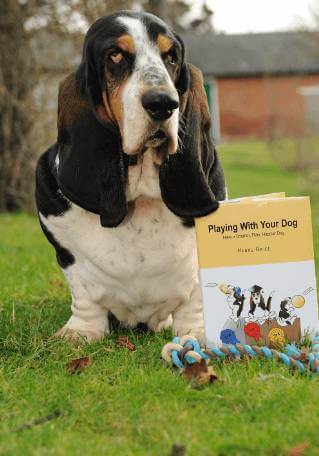
When the video of ‘Fenton’, the lively black Labrador, chasing deer across Richmond Park followed by his swearing owner went viral three years ago, dog owners around the world nodded in understanding – haven’t we all been there at some stage?
Teaching a reliable recall is best achieved when our dog is young. But often, owners can be lulled into a false sense of security that our puppy has a reliable recall because he sticks to us ‘like glue’. Yet this can change if training lapses or if there is a lack of training when the dog is young – soon this comes back to haunt the owner when their pooch hits adolescence and beyond.
Regardless of how much effort you put into training, it is important to be realistic. No dog is ever going to be 100% reliable at coming when called. That’s because, just like us, dogs are free-thinking individuals. They can have their good days and they can have their bad days. They may not hear you call. Sometimes they are busy investigating something else, or they may misunderstand what you want them to do. And, at times dogs simply want to do something else.
Breed characteristics can also affect trainability. For example, Hound dogs are notoriously difficult to teach recall. Believe me, I know. It took me over nine months of non-stop training with my Basset Hound to gain anything that even remotely resembled a reliable recall! So, patience and consistency is key when training this behaviour, whatever the breed.
Regardless of your dog’s age or breed, if you are struggling with recall then read on!
Top 5 tips for Recall
- You’re simply the best! The first step to successful recall is getting your dog to learn that coming to you is simply the best thing he can do. Whether your dog chooses to come to you by his own volition or you have called him to you, always show that you appreciate it. A great way to acknowledge this is through smiles, praise, affection, play or tasty treats. This consistent positive reinforcement will ensure your dog regularly “checks in” with you when you are out and about.
- Be fun on your walks! Doing fun and quirky things during a walk such as “Hide & Seek” or playing “Whatever your dog does, do the opposite” and “Keep moving away from your dog, fast” maintains your dog’s interest in you. Remember, you are vying for his attention against the plethora of amazing scents, auditory and visual stimuli. So, make yourself the ‘treat and toy god’. Dr Ian Dunbar advocates the owner being the giver of great things and the window to actions your dog loves to do. For example, telling your dog to “go sniff” makes you a controller of good things, even though you don’t ‘own’ those things, you can provide opportunities for the dog to experience them.
- Be clear with your instructions. Avoid calling your dog’s name assuming he should know to come to you. Instead, say your dog’s name and call out “Come”. At the same time make a big gesture, stretching out your arms and folding them into your chest. This movement really helps dogs understand what we are asking them to do. Avoid constantly chatting to your dog while out on a walk too. As this will cause him to “tune out”. So, make your training session or your dog walk count by staying quiet much of the time you are together. That way your dog will be more likely to pay attention to you when you do call him.
- Never chase after your dog. This can turn it into a game which your dog may then dictate – quickly you will teach him to avoid coming to you, especially if you look and sound angry too.
- Fiddle out. Typically, owners only pop the lead back on their dog when it is time to head home. This quickly teaches the dog that the fun ends when the collar is touched and the lead goes on. So, some dogs may avoid coming back when called if they see you moving the lead, or bob their head away when you reach down to them. To avoid this, frequently practice popping on and off your dog’s lead and fiddle about with his collar during the walk. This will soon break any associations that it means the walk has ended. Moreover, getting your dog used to being touched around the collar is especially important if you ever needed to dive in and grab him in the event of an emergency.
Finally, do take a common sense approach with recall. If your dog has great recall in the kitchen at home, don’t expect the same when in a field where other dogs are playing. Make sure you teach recall in various stages, slowly introducing distractions from afar then taking this up a notch. If in doubt, play it safe – always have your dog on a long line when training recall, especially in unsecure areas.
Happy training!
If you would like more help with recall, why not set yourself and your dog up for success by booking a 1-1 Training session with Hanne Grice. Alternatively, for game ideas when out on a walk, read ‘Playing With Your Dog’ by Hanne Grice ISBN:978-1453529645.
Learn more about our classes

Get Hanne's book, clothing and more
Hanne has a number of publications including her book Playing With Your Dog to help owners work out the games that are best suited for their pet to play throughout his life, from puppyhood to old age, available from Amazon. Check out Hanne's range of contemporary casuals The Collection – for pet lovers made from recyclable, organic materials that are sustainably sourced.

